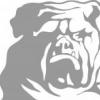-
Posts
1,907 -
Joined
-
Last visited
-
Days Won
54

rhasler replied to ThaddeusW's topic in Engine and Transmission

rhasler replied to jeffl1107's topic in Engine and Transmission

rhasler replied to caplumly's topic in Modern Mack Truck General Discussion

rhasler replied to caplumly's topic in Modern Mack Truck General Discussion

rhasler replied to caplumly's topic in Modern Mack Truck General Discussion

rhasler replied to Frenchy Mack's topic in Antique and Classic Mack Trucks General Discussion

rhasler replied to caplumly's topic in Modern Mack Truck General Discussion

rhasler replied to caplumly's topic in Modern Mack Truck General Discussion

rhasler replied to 41chevy's topic in Antique and Classic Mack Trucks General Discussion
BigMackTrucks.com is a support forum for antique, classic and modern Mack Trucks! The forum is owned and maintained by Watt's Truck Center, Inc. an independent, full service Mack dealer. The forums are not affiliated with Mack Trucks, Inc.
Thank you for your support!